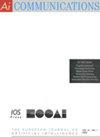IMATSA – an improved and adaptive intelligent optimization algorithm based on tunicate swarm algorithm
IF 1.4
4区 计算机科学
Q4 COMPUTER SCIENCE, ARTIFICIAL INTELLIGENCE
引用次数: 0
Abstract
Swarm intelligence optimization algorithm has been proved to perform well in the field of parameter optimization. In order to further improve the performance of intelligent optimization algorithm, this paper proposes an improved and adaptive tunicate swarm algorithm (IMATSA) based on tunicate swarmalgorithm (TSA). IMATSA improves TSA in the following four aspects: population diversity, local search convergence speed, jumping out of local optimal position, and balancing global and local search. Firstly, IMATSA adopts Tent map and quadratic interpolation to initialize population and enhance the diversity. Secondly, IMATSA uses Golden-Sine algorithm to accelerate the convergence of local search. Thirdly, in the process of global development, IMATSA adopts Levy flight and the improved Gauss disturbance method to adaptively improves and coordinates the ability of global development and local search. Then, this paper verifies the performance of IMATSA based on 14 benchmark functions experiment, ablation experiment, parameter optimization experiments of Support Vector Machine (SVM) and Gradient Boosting Decision Tree (GBDT), Wilcoxon signed rank test and image multi-threshold segmentation experiment with the performance metrics are convergence speed, convergence value, significance level P-value, Peak Signal-to-Noise Ratio (PSNR) and Standard Deviation (STD). Experimental results show that IMATSA performs better in three kinds of benchmark functions; each component of IMATSA has a positive effect on the performance; IMATSA performs better in parameter optimization experiments of SVM experiment and GBDT; there is significant difference between IMATSA and other algorithms by Wilcoxon signed rank test; in image segmentation, the performance is directly proportional to the number of thresholds, and compared with other algorithms, IMATSA has better comprehensive performance.IMATSA - 基于调谐群算法的改进型自适应智能优化算法
事实证明,群智能优化算法在参数优化领域具有良好的性能。为了进一步提高智能优化算法的性能,本文在调谐蜂群算法(TSA)的基础上提出了一种改进的自适应调谐蜂群算法(IMATSA)。IMATSA 从种群多样性、局部搜索收敛速度、跳出局部最优位置、平衡全局搜索和局部搜索四个方面对 TSA 进行了改进。首先,IMATSA 采用 Tent map 和二次插值来初始化种群,提高了种群多样性。其次,IMATSA 采用 Golden-Sine 算法加快局部搜索的收敛速度。第三,在全局发展过程中,IMATSA 采用 Levy flight 和改进的高斯干扰法,自适应地提高和协调全局发展和局部搜索的能力。然后,本文基于14个基准函数实验、消融实验、支持向量机(SVM)和梯度提升决策树(GBDT)参数优化实验、Wilcoxon符号秩检验和图像多阈值分割实验验证了IMATSA的性能,性能指标包括收敛速度、收敛值、显著性水平P值、峰值信噪比(PSNR)和标准偏差(STD)。实验结果表明:IMATSA 在三种基准函数中表现较好;IMATSA 的每个组成部分都对性能有积极影响;IMATSA 在 SVM 实验和 GBDT 的参数优化实验中表现较好;通过 Wilcoxon 符号秩检验,IMATSA 与其他算法有显著差异;在图像分割中,性能与阈值数成正比,与其他算法相比,IMATSA 具有更好的综合性能。
本文章由计算机程序翻译,如有差异,请以英文原文为准。
求助全文
约1分钟内获得全文
求助全文
来源期刊

AI Communications
工程技术-计算机:人工智能
CiteScore
2.30
自引率
12.50%
发文量
34
审稿时长
4.5 months
期刊介绍:
AI Communications is a journal on artificial intelligence (AI) which has a close relationship to EurAI (European Association for Artificial Intelligence, formerly ECCAI). It covers the whole AI community: Scientific institutions as well as commercial and industrial companies.
AI Communications aims to enhance contacts and information exchange between AI researchers and developers, and to provide supranational information to those concerned with AI and advanced information processing. AI Communications publishes refereed articles concerning scientific and technical AI procedures, provided they are of sufficient interest to a large readership of both scientific and practical background. In addition it contains high-level background material, both at the technical level as well as the level of opinions, policies and news.
 求助内容:
求助内容: 应助结果提醒方式:
应助结果提醒方式:


